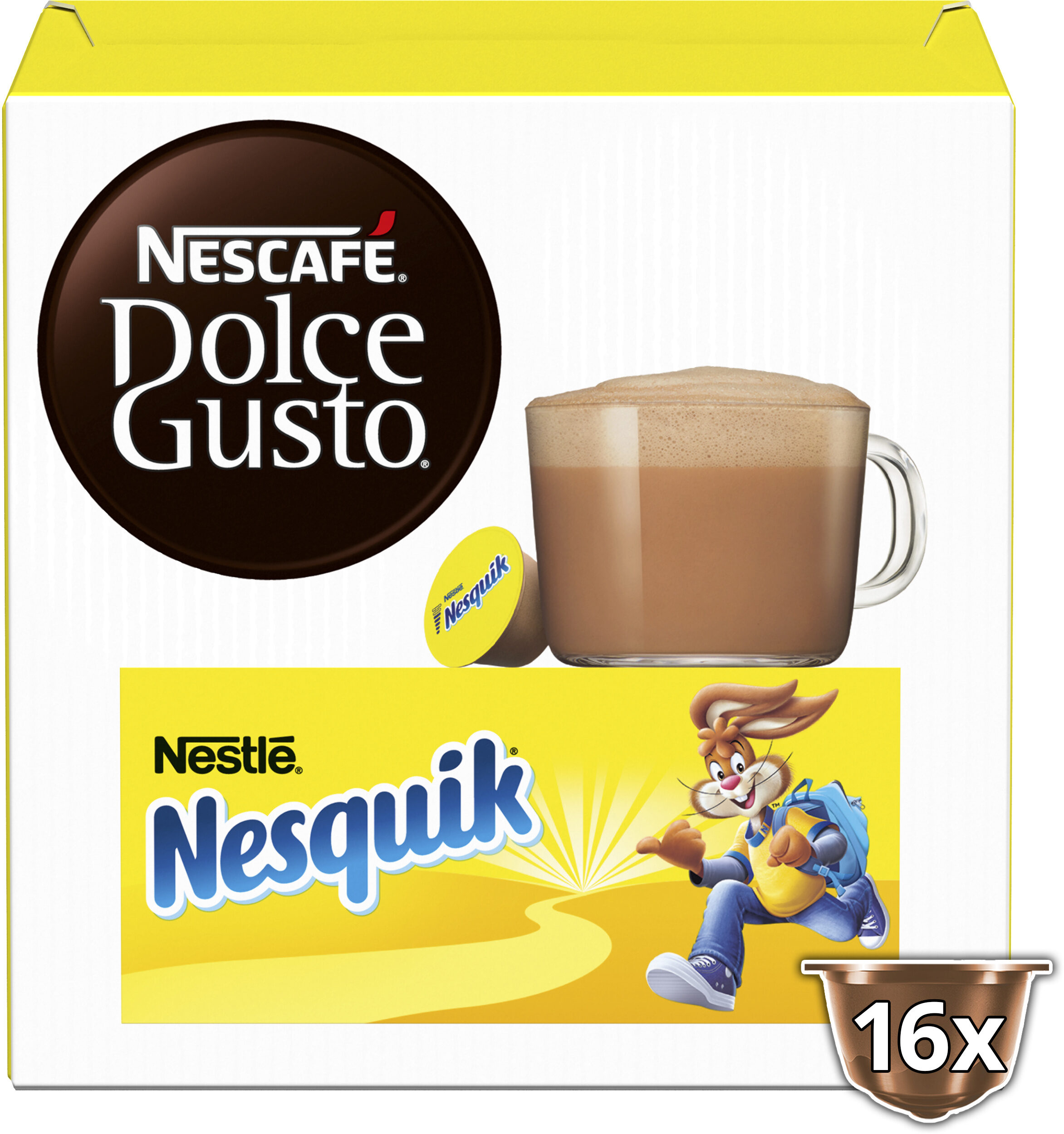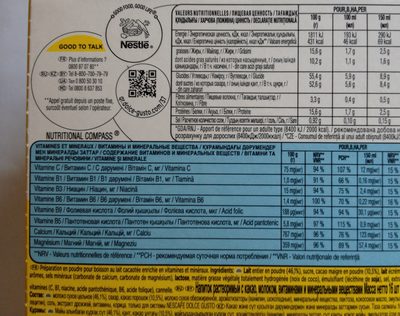Dolce Gusto Nesquik - Nescafé - 256 g
This product page is not complete. You can help to complete it by editing it and adding more data from the photos we have, or by taking more photos using the app for Android or iPhone/iPad. Thank you!
×
Some of the data for this product has been provided directly by the manufacturer NESTLE FRANCE. - Customer service: Contact form 0 809 400 412 (service gratuit + prix de l'appel)
Barcode: 7613033162220 (EAN / EAN-13)
Common name: Boisson cacaotée et au lait
Quantity: 256 g
Packaging: Plastic, Bottle cap, Wine cork, Box, Capsule, Cardboard, Individual dose, fr:21
Brands: Nescafé, Nescafé Dolce Gusto, Dolce gusto
Categories: Plant-based foods and beverages, Beverages, Plant-based foods, Cocoa and its products, Hot beverages, Cocoa and chocolate powders, Coffees, Instant beverages, Capsules, Chocolate powders, Cocoa capsules, Coffee capsules, Dolce Gusto-compatible capsules, Dolce Gusto-compatible coffee capsules
Labels, certifications, awards:
No gluten, Green Dot, Made in Spain, Nutriscore, Triman

Manufacturing or processing places: Espagne
Traceability code: DE MV-16006 EG
Link to the product page on the official site of the producer: https://www.dolce-gusto.fr/FR/capsules/N...
Stores: Auchan, Magasins U, carrefour.fr
Countries where sold: France, Martinique, Spain, fr:Francia, fr:Suiza
Matching with your preferences
Environment
Carbon footprint
Packaging
Transportation
Other information
Preparation: 1 capsule = 1 tasse de 150 ml.
Conservation conditions: Conserver dans un endroit propre, sec et à température ambiante.
Customer service: Nestlé France, 34-40 rue Guynemer 92130 Issy-les-Moulineaux
Report a problem
Data sources
The manufacturer NESTLE FRANCE uses Equadis to automatically transmit data and photos for its products.
Product added on by openfoodfacts-contributors
Last edit of product page on by moncoachigbas.
Product page also edited by 5m4u9, beniben, covol44, danis1597, date-limite-app, desan, driveoff, ecoscore-impact-estimator, feat, foodvisor, inf, jeanbono, kiliweb, lamiss0106, magasins-u, manu1400, mbe, moon-rabbit, nestle-france, org-nestle-france, packbot, roboto-app, scanbot, teolemon, thaialagata, yuka.R2E4S1BvOFQvS2N6eS9ZaitCVE05KzFRbktXN1FHenNMZU1XSWc9PQ, yuka.R3FGWVMvNFltZUV0bDhOaTl6TFc5TmxrNXNTWVgxeXJGUEV4SUE9PQ, yuka.R3JrWUM3VWU5cVEyc1BNOXhUVHg1WXhUMTY2Q1gwS3BCL0lZSVE9PQ, yuka.SC84UU1Zc051YWtCc2NjQzhBMkkyODVKbVlhNEFYcWVOZnNnSVE9PQ, yuka.SEo4eVA2RW9qK0F2aWRzZjJoVHkwL1JOMjZTSlEzNmRPY0VRSVE9PQ, yuka.V2FSWkM0WS92cVVHcHRzdXBrN1l3TlpveGEyS2QzcUdDK2dXSVE9PQ, yuka.WGZBOU9hVWVnYU1vc2N3ejRUVFA1dXRrM29UemYyU1ZjK2tmSWc9PQ, yuka.WUljU0hJcGJvY2M3a1BCbTVEM1pwSXhIMnJXMFZseVhCZWM3SVE9PQ, yuka.WktjTlRZTUxxOTFVeHNFbXdpanozdlpsbWEyc0IycnNKdVlVSVE9PQ, yuka.YTZJOUs0RURodndMdmNNWHhEVFF3dXByeUorUlgxMitPK3dBSVE9PQ, yuka.YW9jclNiNE1oTVFtbjhReDVFdi82T2hhMXByMlgyNktFY3d3SUE9PQ.
Last check of product page on by beniben.








